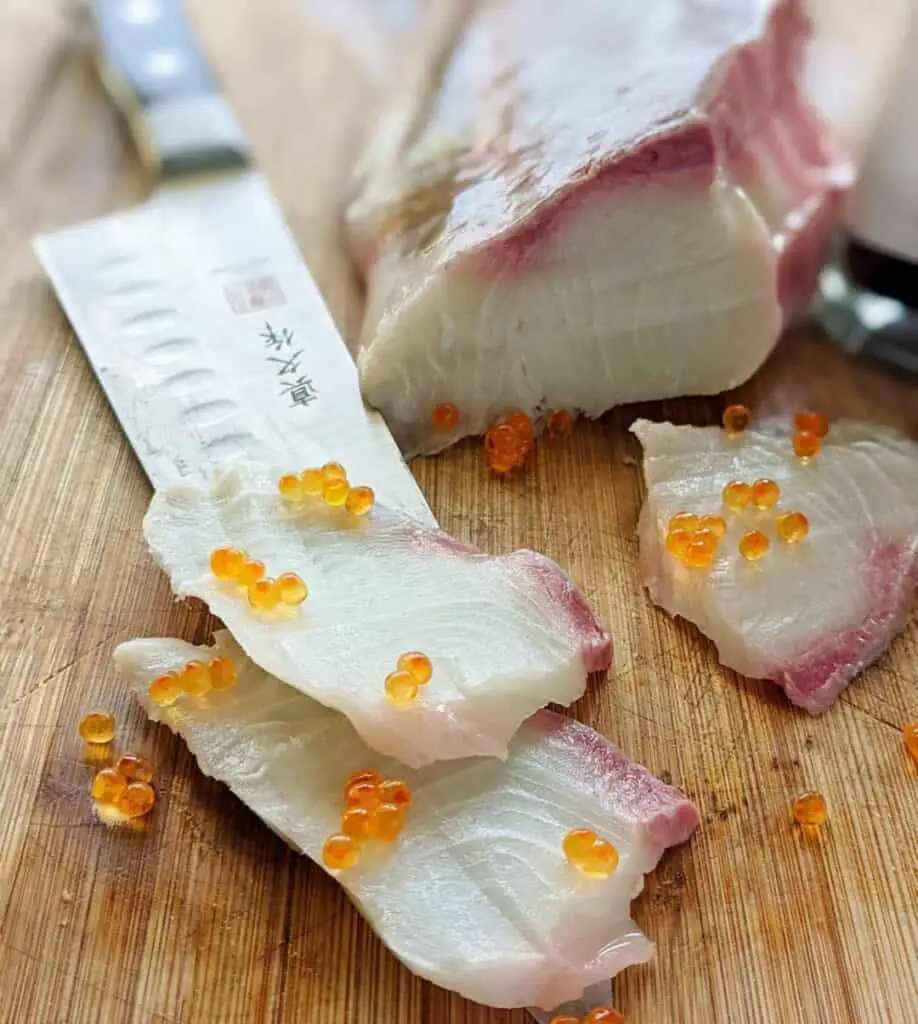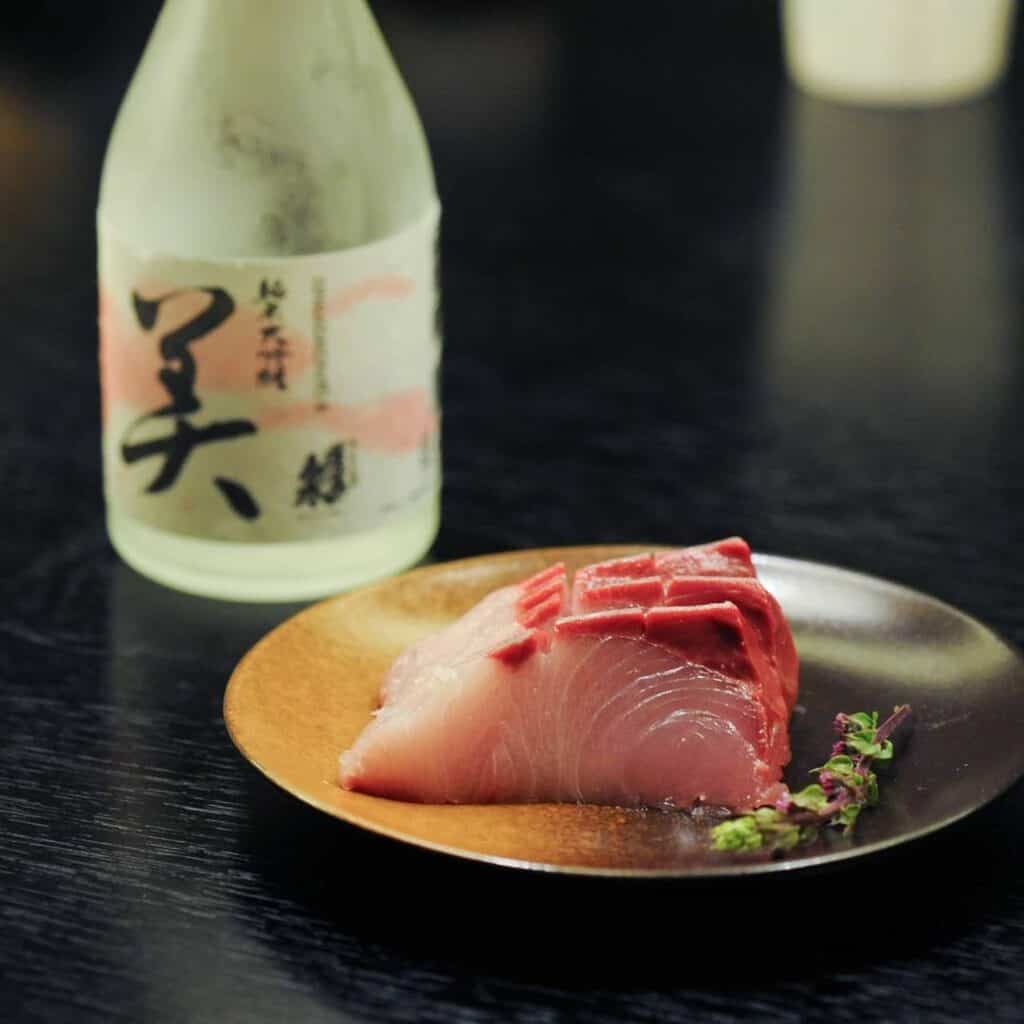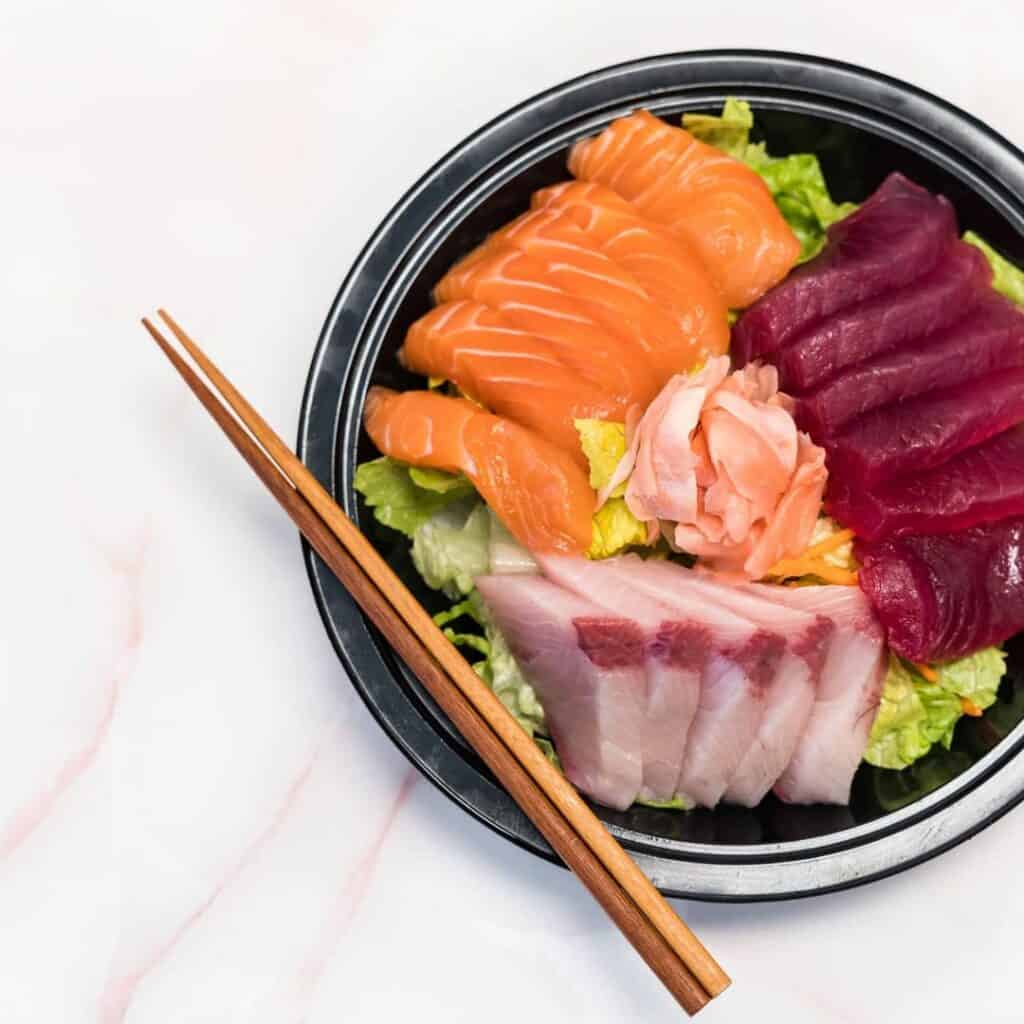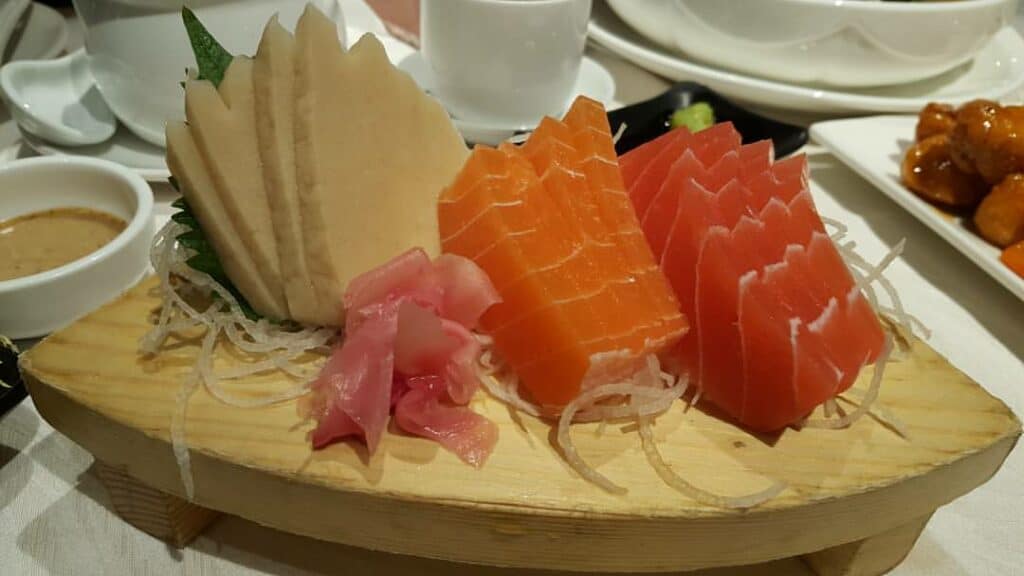Does the wide variety in Japanese menu items have you scratching your head, a bit afraid to order? Let’s talk about two favorite items which are easily confused.
What’s the difference between Hamachi and Sashimi? Hamachi is a type of fish (a Japanese Amberjack) that is often served in Japanese restaurants and is frequently offered raw. Sashimi refers to the broad category of raw fish, sliced and presented with side flavorings. Hamachi is a common type of sashimi.


Let’s take a closer look at hamachi and sashimi, so you’ll feel confident next time you’re ordering from your favorite Japanese restaurant.
Hamachi vs Sashimi
So what is Hamachi? Hamachi is a type of yellowtail fish. It is often served sushi-style, as sashimi or in nigiri. It has a moderate flavor and a slightly firmer texture than other types of raw fish. Hamachi is considered to be a premium sushi fish and is usually one of the more expensive options at a sushi restaurant.
Here is an in-depth post about what Hamchi is.
Hamachi is a type of Japanese amberjack or yellowtail fish. It breeds widely in the northwest Pacific between Korea and Hawaii. In Japan, hamachi is also called “buri” and can be served cooked or raw. Often confused for yellowtail tuna, hamachi is not from the tuna family.
Sashimi refers to a style of Japanese cuisine where sliced raw (or slightly seared) meat is served as an individual plate.
Most often featuring fish and other seafood items, sashimi is popular and is often used interchangeably (and incorrectly) when referring to sushi. Sushi contains rice seasoned with vinegar, while sashimi is served on its own.
Both sashimi and sushi can feature raw fish or seafood. For example, tuna might be featured as a sashimi plate and could also form the part of a tuna roll (a sushi specialty).
The key distinction is that sashimi is served on its own, the raw meat being the main (and only) feature.
Sashimi and sushi can be prepared using yellowtail fish (hamachi). Although not a variety favored by top sashimi chefs due to its oily and fishy characteristics, hamachi is a common type of fish in Japanese cooking.

In addition to serving hamachi raw in sushi rolls or sashimi, it can be seared or grilled and flavored with Japanese specialties like teriyaki. Japanese yellowtail is a favorite when making fish stock, often in combination with dried kelp. Culturally, hamachi is considered a winter food, as it has a high fat content.
Looking at Sashimi’s Variety

Sashimi embraces a wide variety of fish and seafood meat. In broad categories, sashimi can be prepared using fish, shellfish, meat or vegetables. Most commonly, sashimi is prepared with fish or shellfish, however, we’ll look at some of the far-ranging possibilities here:
- Fish:
Salmon
Tuna
Mackerel
Horse mackerel
Hamachi (Yellowtail)
Squid
Octopus
- Shellfish:
Prawns
Shrimp
Scallop
Sea urchin
- Meat:
Beef
Pork
Poultry
Chiragaa (pork skin)
Goat
- Vegetables:
Avocado
Bamboo shoots
Daikon radish
Konnyaku
Yuba (tofu skin)
Sashimi Prep Considerations
Consuming raw meat requires excellence in food handling procedures. The freshness of the product and the elimination of salmonella risk are primary safety considerations. The result of poor food handling practices is a sad story of illness and, in some cases, death.
Fish meat deteriorates quickly and its foul odors are an excellent warning system. (Note that the presence of dangerous pathogens can’t be identified by smell alone and may be present long before odors begin.)
Land-based animal meats are of particular concern and have the same dangers associated with them as seafood products. Extreme caution regarding supply chain relationships, equipment, facility inspections and regulatory requirements must be observed. Although some sashimi is prepared with raw pork and poultry, these practices require extreme care and, for the high risks involved, are seldom seen on restaurant menus.
An interesting fact to note regarding traditional fishing techniques for Japanese amberjack (otherwise known as “yellowtail” or “Hamachi”) is that quick death is considered essential for fish-meat quality and taste. Traditionally, the instantaneous killing of the fish was considered essential, normally by the quick piercing of the brain. This procedure prevents the build-up of lactic acid in the fish’s meat during the transportation time between harvesting and serving.
Vegetables in Sashimi?

Although sashimi’s reputation is as a meat-based plate feature, there are several vegetables that are served as sashimi.
Avocado is prepared as sashimi, primarily due to its perceived similarity to raw or salted salmon. Bamboo shoots are considered a fresh delicacy when they are in season. Daikon radish is a uniquely Japanese touch, with a sharp flavor that is best when freshest. Konnyaku is prepared as sashimi as it is thought to mimic pufferfish meat (its nickname is “mountain fish”).
We hope this short exploration into the world of Japanese cuisine has created a curiosity that can be satisfied at your local restaurant. You can now feel emboldened to try some new menu items when you next visit.
